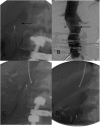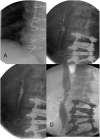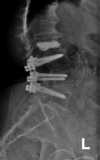Inferior vena cava filtration in the management of venous thromboembolism: filtering the data
- PMID: 23997414
- PMCID: PMC3577583
- DOI: 10.1055/s-0032-1326931
Inferior vena cava filtration in the management of venous thromboembolism: filtering the data
Abstract
Venous thromboembolism (VTE) is a common cause of morbidity and mortality. This is especially true for hospitalized patients. Pulmonary embolism (PE) is the leading preventable cause of in-hospital mortality. The preferred method of both treatment and prophylaxis for VTE is anticoagulation. However, in a subset of patients, anticoagulation therapy is contraindicated or ineffective, and these patients often receive an inferior vena cava (IVC) filter. The sole purpose of an IVC filter is prevention of clinically significant PE. IVC filter usage has increased every year, most recently due to the availability of retrievable devices and a relaxation of thresholds for placement. Much of this recent growth has occurred in the trauma patient population given the high potential for VTE and frequent contraindication to anticoagulation. Retrievable filters, which strive to offer the benefits of permanent filters without time-sensitive complications, come with a new set of challenges including methods for filter follow-up and retrieval.
Keywords: complications; deep vein thrombosis; inferior vena cava (IVC) filter; pulmonary embolism; trauma; venous thromboembolism.
Figures










References
-
- Anderson F A Jr, Zayaruzny M, Heit J A, Fidan D, Cohen A T. Estimated annual numbers of US acute-care hospital patients at risk for venous thromboembolism. Am J Hematol. 2007;82(9):777–782. - PubMed
-
- Tsai A W, Cushman M, Rosamond W D, Heckbert S R, Polak J F, Folsom A R. Cardiovascular risk factors and venous thromboembolism incidence: the longitudinal investigation of thromboembolism etiology. Arch Intern Med. 2002;162(10):1182–1189. - PubMed
-
- Angel L F Tapson V Galgon R E Restrepo M I Kaufman J Systematic review of the use of retrievable inferior vena cava filters J Vasc Interv Radiol 201122111522–1530., e3 - PubMed
-
- Tapson V F. Acute pulmonary embolism. N Engl J Med. 2008;358(10):1037–1052. - PubMed

